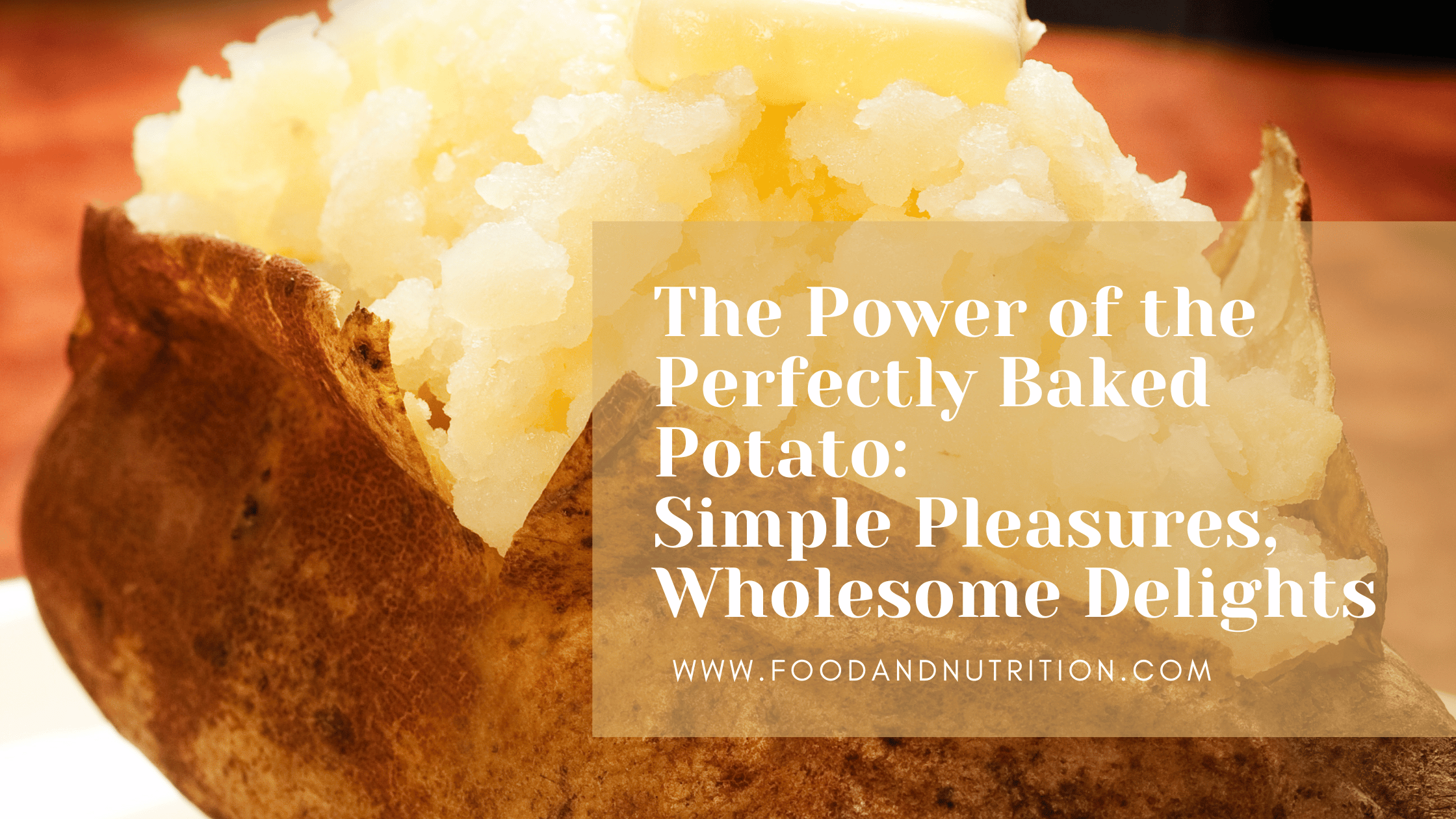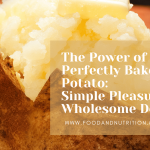The Power of the Perfectly Baked Potato: Simple Pleasures, Wholesome Delights

When it comes to comfort food, few dishes can rival the simple yet satisfying appeal of baked potatoes. This classic recipe has stood the test of time, bringing warmth and nourishment to countless tables around the world. In this blog post, we will explore the history, popularity, common ingredients, nutritional benefits, and various serving ideas for this beloved dish. Get ready to discover why baked potatoes deserve a permanent place in your culinary repertoire.
The History of Baked Potatoes
Potatoes, native to the Andes region of South America, have been a staple food for centuries. The method of baking potatoes dates back to the early 19th century when it became a popular cooking technique in Europe. Baking potatoes allowed for a slow and even cooking process, resulting in a soft and fluffy interior encased in a crispy skin. Over time, this humble dish spread across continents, finding its way into kitchens and hearts worldwide.
The Popularity of Baked Potatoes
What makes baked potatoes so popular? The answer lies in their versatility and simplicity. Baked potatoes can be enjoyed as a comforting side dish or transformed into a hearty main course. They serve as a blank canvas for a wide range of toppings, allowing each person to customize their potato to their liking. The appeal of this dish also lies in its affordability and accessibility, making it a beloved choice for families, college students, and food enthusiasts alike.
Common Ingredients
The beauty of baked potatoes lies in their minimal ingredient list, showcasing the natural flavors of the potatoes themselves. The essential components include large russet potatoes, butter, sour cream, salt, and freshly ground black pepper. These ingredients work harmoniously to create a balance of creaminess, richness, and a hint of tanginess. However, feel free to experiment with additional toppings such as grated cheese, chives, bacon bits, or even a dollop of guacamole to take your baked potato to the next level.
Baked Potatoes
Ingredients
- 6 large russet potatoes
- Butter
- Sour cream
- Salt
- Freshly ground black pepper
- Chives
Instructions
- Preheat your oven to 350°F (175°C).
- Scrub the large russet potatoes thoroughly and dry them well.
- Place the potatoes on the center rack of the oven.
- Bake the potatoes for approximately 60 minutes or until they are tender.
- Once baked, carefully remove the potatoes from the oven.
- Slice open each potato lengthwise and fluff the insides with a fork.
- Top each potato with a pat of butter and a dollop of sour cream.
- Season generously with salt and freshly ground black pepper.
- Serve the baked potatoes as a delicious side dish alongside your favorite main course.
Nutritional Benefits
Contrary to popular belief, potatoes can be part of a healthy and balanced diet. Baked potatoes are an excellent source of complex carbohydrates, providing a steady release of energy. They are also rich in dietary fiber, which aids in digestion and promotes feelings of fullness. Additionally, potatoes contain essential vitamins and minerals such as vitamin C, potassium, and B vitamins. By opting for toppings like low-fat sour cream and using moderation with butter, baked potatoes can be a nutritious addition to any meal.
Serving Ideas
While the classic combination of butter and sour cream is undeniably delicious, there are countless ways to elevate your baked potato experience. Here are a few serving ideas to inspire your culinary creativity:
- Loaded Baked Potato: Top your baked potato with cooked bacon, cheddar cheese, chives, and a dollop of sour cream for a hearty and indulgent treat.
- Mediterranean Twist: Fill your potato with a mixture of sautéed spinach, feta cheese, and Kalamata olives, then drizzle with a squeeze of lemon juice for a burst of freshness.
- Tex-Mex Delight: Create a Tex-Mex-inspired potato by stuffing it with seasoned black beans, salsa, avocado slices, and a sprinkle of shredded Mexican cheese.
- Veggie Lover’s Dream: Pile your potato high with a medley of roasted vegetables like bell peppers, zucchini, and red onions, then finish with a sprinkle of grated Parmesan cheese.
In Conclusion
Baked potatoes have rightfully earned their place as a beloved comfort food. Their rich history, widespread popularity, versatility, and nutritional benefits make them a timeless delight. In a world of ever-changing culinary trends, the baked potato remains a steadfast favorite. It can accommodate various dietary preferences and restrictions, making it suitable for different meal occasions. With their impressive nutrient profile, baked potatoes offer a satisfying and nourishing meal choice. So, embrace the simplicity and endless possibilities of the humble baked potato, and let it delight your taste buds and warm your soul.
- Rediscovering Lebanese Salad: A Refreshing Delight with a Rich Heritage
- Eating Your Way to Healthy Blood Pressure: A Guide to Lowering Hypertension
- Perfect Roasted Leg of Lamb: A Timeless Delight for Your Table
- Romesco Sauce: A Flavorful Spanish Delight That Elevates Every Dish
- Master Cooking with Salt: A Guide to Types & Uses – Elevate Meals
- Unlock the Flavor: The Ultimate Guide to Cooking Salts
